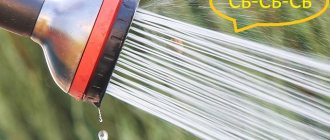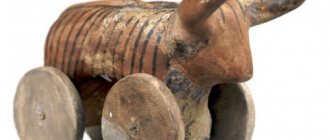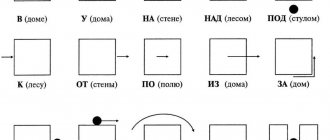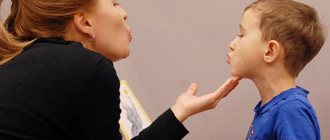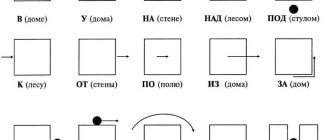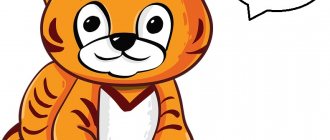Collocations (63)
- on the other side
- easily
- since
- from scratch
- On the one side
- from the position
- by using
- with joy
- from the very beginning
- since then
- over time
- from point of view
- with difficulties
- Sincerely
- with pleasure
- taking into account
- taking into account that
- with the aim of
- on my own
- by itself
- the most important
- fresh breeze
- fresh bread
- free time
- kind
- related to that
- draw a conclusion
- canny
- present day
- horny
- seven spans in the forehead
- seven Fridays a week
- strength of will
- strength of mind
- strong-willed
- through the prism
- more likely
- God bless
- Sweet dreams
- It should be noted
- in the following way
- lexicon
- headlong
- meaning of life
- with time
- from the outside
- we inform you the following
- component
- comprises
- health status
- social network
- range of services
- Good night
- carelessly
- At once
- among them
- that is
- older generation
- it is worth noting
- shot sparrow
- striving for the best
- as it appears
- field of activity
On this page you can find the most popular words starting with "s" (at the beginning of the word - S). The list is sorted alphabetically. You can add your options in the comments. If you click on a word, its synonyms and meanings will open.
See also: words containing S.
Open page 2 of words starting with →
- The search took 0.008 seconds. Remember how often you look for something to replace a word with? Bookmark sinonim.org to quickly search for synonyms, antonyms, associations and sentences (press Ctrl+D).
STAGES OF WORK ON SOUND.
Working on a new sound that a child pronounces incorrectly includes a number of stages: 1. Clarifying the movements of the organs of the articulatory apparatus necessary to pronounce a given sound, training the movements of the articulatory apparatus - articulatory gymnastics, 2. Appearance of the sound - production of the sound, 3. Mastery of the sound - consolidating the correct pronunciation of sounds in the child’s speech (in isolation, in syllables, in words, in phrases and texts - poems, stories, games, nursery rhymes). I will tell you about all these stages in more detail.
FIRST STAGE. ARTICULATION GYMNASTICS FOR WHISTLING SOUNDS (S, Sь, Z, ZZ, Ts)
As a rule, in a child who does not speak the sound s or pronounces it incorrectly, the sound pronunciation of other whistling sounds is also impaired (whistle sounds include the sounds s, з, ц and the soft version of the sounds - сь, зь). One of the reasons for incorrect pronunciation of sounds is insufficient mobility of the organs of the articulatory apparatus. Therefore, for correct pronunciation, special “regular exercise” is needed - articulatory gymnastics. The complex of articulatory gymnastics combines exercises that prepare strictly defined movements of the articulatory apparatus and the positions of the tongue and lips necessary for a given group of sounds and produce the correct air stream. Therefore, I really do not recommend that mothers, fathers, grandmothers, and grandfathers come up with their own articulation gymnastics complexes from different books and from the Internet. After all, all articulation gymnastics complexes are by no means composed randomly! It is impossible to form movements that are opposite to each other at the same time, therefore, in the complex of articulatory gymnastics, all exercises complement each other and are aimed at one goal - one group of sounds! Articulation gymnastics should be performed daily without breaks. The most convenient time is before breakfast in the morning. Carrying out such gymnastics requires only 3-5 minutes of your time. Each time, articulatory gymnastics is carried out in a playful way - in the form of a fairy tale or story, accompanied by exercises. This is where your imagination is welcome - you can come up with any plot in which you include these exercises, and change the plot and characters in accordance with the interests of your baby!
TIPS FOR CONDUCTING ARTICULATIVE GYMNASTICS - THIS IS IMPORTANT TO KNOW AND DO:
• Usually 2-3 exercises are performed at a time. Each exercise is performed multiple times. • If you add a new exercise to the complex, then there is only one, and all other exercises should be already familiar to the child by this time. • If a child finds it difficult to do old familiar exercises, then a new exercise is not introduced, but the old ones are reinforced. But consolidation occurs in a new form for the child - in a new plot, with new characters. • Articulation gymnastics should be done while sitting in front of a mirror - you sit next to the child facing the mirror and show all the movements, the child can clearly see your face. • It is imperative to monitor the symmetry of the face when performing gymnastics movements (the child’s movements must be symmetrical to the left and right half of the face). This is clearly visible to the child in the mirror, and he can track whether he is performing the movement correctly. • During articulatory gymnastics, it is necessary to monitor the accuracy, smoothness of movements, give the child clear criteria for the correctness and incorrectness of performing the exercise, correct his mistakes, monitor the absence of unnecessary side movements, a good pace of gymnastics and the ability to move from one movement to another. If you simply carry out the exercises formally, then their implementation is useless or of little use! After all, articulation gymnastics is not called that for nothing. This is truly “gymnastics”, in which correct movements are important, and not just playing with the tongue! By analogy: if you just lazily twirl your arms, it will not be physical education or fitness and will not have a good result for your health! It’s the same in articulation gymnastics. What is important for the result is the quality of the movements, and not any movement in itself. • Articulation gymnastics exercises, if performed correctly and accurately, are not easy for most children. Therefore, do not scold your child under any circumstances, do not grieve that he does not succeed the first time. Everything needs to be learned! And there is one law of life - everything that is developed develops! Therefore, everything is still ahead of you! Praise your baby for what he is already doing - you can already make your tongue wide, your tongue has already begun to move quickly, etc.
The preparatory complex of articulatory gymnastics includes exercises necessary for pronouncing any sounds. It is with this preparatory complex that it is best to start practicing articulatory gymnastics in kindergarten or at home. The basic version of this complex, which you can start doing at home: • Smile and keep your lips in a smile. In this case, the front teeth are exposed and clearly visible. • Tube. Pulling the lips forward with a tube. With this movement, only the lips move! • Ring. Ring-shaped lips. • Alternation: smile – ring – tube. • Calm opening and closing of the mouth, lips in a smile. There should be no other unnecessary movements! • The tongue is wide. • The tongue is narrow. • Alternation: wide tongue – narrow tongue. • Lifting the tongue by the upper teeth. • Alternating upward and downward movements of the tongue. •Alternating movements of the tongue with the tip of the tongue lowered down: move the tongue deeper into the mouth - bring it closer to the teeth.
If these movements are easy for the child, then you can immediately move on to the complex for whistling sounds. If there are difficulties, then you need to train the basic movements from the preparatory complex. If a child cannot do the exercise with alternating “smile - ring - tube”, then I highly recommend consulting with a speech therapist.
A COMPLEX OF ARTICULATION EXERCISES FOR WHISTLING SOUNDS S. Z, C (DEVELOPED BY FOMICHEVA M. V.).
Helpful Tips:
- In each exercise, I give a description of the movements and typical mistakes (see “What to pay attention to”). After the description you will find videos of all exercises.
- First, do all these exercises yourself in front of the mirror, paying attention to all the nuances, master them, and then learn them with your children.
- Never scold a child for a mistake, just show them again the correct version of the exercise, focusing on the necessary nuance, describe to the child in words how to perform the movements, what to watch for. Children are completely calm about the “funny tongue’s mistakes” and are happy to “teach” him to do the movements correctly.
EXERCISE 1. PUT THE BALL INTO THE GATE.
Our task: in this exercise the child will learn to direct a long, directed stream of air. Performing the exercise: Place two cubes on the table - these are gates. And next to the gate on the table in front of the child, place a cotton ball. The child stretches his lips forward with a tube, blows on the ball and tries to drive it into the gate made of cubes. What you need to pay attention to: • Do not puff out your cheeks! The baby can hold them with his hands to control himself. • The air stream should be long and without interruptions - one long exhalation.
EXERCISE 2. PUNISH YOUR Naughty Tongue.
Our task: to teach the child to keep his tongue wide and relaxed. And continue to produce a directed air stream. Performing the exercise: The child, opening his mouth slightly, puts his tongue on his lower lip and, smacking his lips, says five-five-five. He then opens his mouth and keeps his tongue relaxed, wide and resting on his lower lip. I don’t like to “punish” the tongue with children, which is already trying its best to practice, so I do this exercise with the kids in a different plot - the tongue rests and sings the song five-five-five. Or I suggest the child massage his tongue: five-five-five. You can come up with your own plot. What you need to pay attention to: • The lower lip should not curl up. • The edges of the tongue touch the corners of the mouth - the tongue is really very wide. • We pat the tongue with our lips several times during one exhalation, while the air stream flows smoothly, without interruption, without holding our breath. • A child can check the correctness of the exercise in this way: bring a piece of cotton wool to his mouth, and it will deflect. Children always really like this kind of self-test.
EXERCISE 3. WIDE TONGUE – PANCAKE.
Our task: we will teach the child to hold his tongue in a calm, relaxed state. Performing the exercise: You need to smile, put the wide front edge of your tongue on your lower lip and hold it in this state for a count of one to five to ten. Try it yourself first! What you need to pay attention to when watching the exercise in the mirror: • The lips should not be in a tense smile - a grimace, they should be relaxed in a smile. • The lower lip should not curl up. • The tongue should not “run away” far - it simply covers the lower lip. • The lateral edges of the tongue touch the corners of the mouth - it is relaxed. • If the exercise does not work, then you need to continue doing the previous one - “punish the tongue.” And return to this exercise later.
EXERCISE 5. WHO WILL DRIVE THE BALL FURTHER?
Our task is to practice the correct air stream - the air goes in the middle of the tongue, the air stream is smooth, long, continuous. Performing the exercise: You will need cotton wool, which we will try to drive away. Fleece is our “ball”. You need to smile and place the wide front edge of your tongue on your lower lip. Next, pronounce the f sound for a long time. And blow the cotton wool onto the opposite edge of the table. What you need to pay attention to: • The lower lip should not be pulled over the lower teeth. • Do not puff out your cheeks! • You need to pronounce the sound f, not x - it is with the sound f that the air stream is narrow, as we need.
EXERCISE 6. BRUSHING YOUR TEETH.
Our task: we will teach the child to hold the tip of the tongue behind the lower teeth - this is required to pronounce whistling sounds. Performing the exercise: Smile, open your mouth slightly. Use the tip of your tongue to brush your lower teeth. First move your tongue from side to side, and then from bottom to top. What you need to pay attention to: • Lips in a smile and motionless during the entire exercise. • When moving from side to side, the tongue is at the gums and not at the top edge of the teeth. • When moving from bottom to top, the tip of the tongue should be wide and move upward from the root of the teeth.
Sometimes adults find articulation gymnastics boring and uninteresting. But not for children! I know from my own experience that children really like to look at themselves in the mirror, “learn their naughty tongue” and improve the technique of doing the exercise. And to all children! And if the plot of the exercises is changed, then the interest in them always remains very high, and there is a kind of intrigue - what will be new this time? After all, the baby himself clearly sees his results, sees that every time he makes the movement better and better, more and more accurate. And in this way the baby explores himself, the structure of his body, which is also very exciting for preschoolers.
It is simply impossible to say in absentia how much time it will take for the preparatory work. For one child three times is enough, for another - a week, for a third - a month. But the better the organs of the articulatory apparatus are developed, the faster the baby will learn to pronounce all sounds correctly. Therefore, there is no need to waste time on this and rush!


